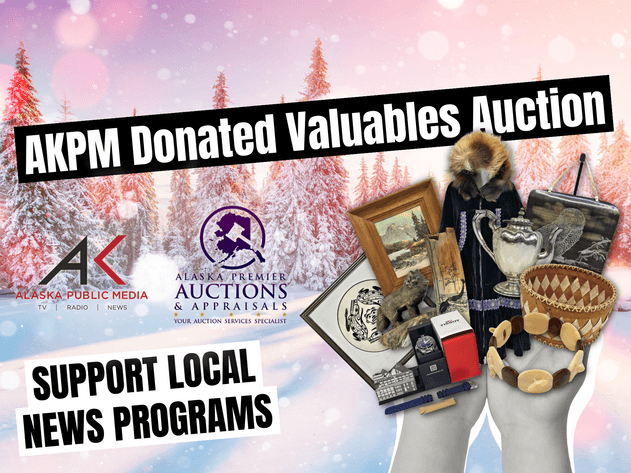The Art and Craft of Inuit Soapstone Carving
The Art and Craft of Inuit Soapstone Carving
Inuit soapstone carving is a traditional art form from the Arctic, known for its unique depictions of animals and daily life. This article explores its history, materials, techniques, and themes, as well as notable artists who have made significant contributions. Discover the cultural significance and craftsmanship behind Inuit soapstone carvings.
Key Takeaways
- Inuit soapstone carving has evolved from functional items to celebrated artistic expressions, reflecting the culture’s rich history.
- Key materials used in Inuit carvings include soapstone, bone, and ivory, each contributing unique characteristics and cultural significance.
- Notable contemporary Inuit artists and their works exemplify the depth and diversity of Inuit soapstone carving, enhancing its recognition in the global art market.
The Evolution of Inuit Soapstone Carving
Inuit soapstone carving has a rich history that reflects the evolution of Inuit life and culture. Initially, these carvings served functional purposes, such as tools and amulets used in daily life and shamanic rituals. Over time, they transitioned into recognized forms of art, including carved soapstone sculpture, capturing the attention of collectors and enthusiasts worldwide.
The historical period saw a significant shift as interactions with southern cultures introduced new influences and opportunities. This period marked the creation of larger and more detailed pieces aimed at the tourist market. The carvings became not just functional items but exquisite representations of Inuit life, capturing the essence of their environment and traditions.
The contemporary period of Inuit art began in 1949 with efforts to promote Inuit sculptures and the establishment of Inuit-owned cooperatives. These initiatives helped elevate soapstone carving to a celebrated cultural expression and artistic achievement. Inuit soapstone carvings today exemplify the resilience and creativity of the Inuit people, connecting their rich heritage with the modern art world.
Materials Used in Inuit Soapstone Carvings
[Various materials used in inuit soapstone carvings.]
The materials used in Inuit carvings are as diverse as the Arctic landscape itself. The choice of material often depends on its availability, which in turn influences the type of carvings created. Each piece of art beautifully reflects the intimate relationship between the Inuit community and their environment.
Soapstone, bone, and ivory are the primary materials used in Inuit carvings. Each material brings its unique properties and challenges, contributing to the distinct characteristics of the carvings.
Next, let’s explore the specifics of these materials, beginning with the most commonly used one: soapstone.
Soapstone
Primarily composed of talc, soapstone is favored by Inuit carvers for its softness, ease of carving, and durability. Its abundance and cost-effectiveness compared to ivory led to its widespread use after the 1940s. In regions such as Cape Dorset, soapstone is synonymous with Inuit carving, enabling artists to craft intricate and detailed sculptures.
However, soapstone is not without its challenges. Iron pyrite inclusions, for example, can cause issues such as corrosion, splitting, and staining, which can affect the quality and longevity of the carvings. Despite these challenges, soapstone remains a preferred medium due to its versatility and the stunning results it can achieve when expertly carved and finished.
Bone and Ivory
Bone and ivory, particularly walrus ivory and tusks, have a long history in Inuit carving. Walrus ivory is distinguished by its two layers: a creamy outer layer and a denser inner layer of secondary dentine. Beyond functionality, these materials hold cultural significance, often symbolizing strength and resilience.
However, working with bone presents its own set of challenges. The organic component in bone provides flexibility but can deteriorate before it is carved. Additionally, whale bone carvings may retain original oil, which can cause dark coloration and a distinct smell.
Despite these challenges, bone and ivory remain integral to Inuit art, adding depth and authenticity to the carvings.
Other Materials
Beyond soapstone, bone, and ivory, Inuit carvers have utilized a variety of materials, including caribou antlers, marine mammal ivory, and various animal bones. In the 1950s and 1960s, Inuit artists showcased their resourcefulness by using plastic from old phonograph records for inserts in carvings.
The variety of materials enriches Inuit carvings, with each piece narrating its unique origin story.
Techniques and Tools in Inuit Stone Carving
The artistry of Inuit stone carving is brought to life through a combination of traditional techniques and modern innovations. Inuit carvers primarily use tools such as axes and files to shape the stone, with rasps and files helping to refine the details. This intricate process demands high skill, with each step meticulously executed to bring the artist’s vision to life.
The sanding process is particularly crucial, involving multiple grits and culminating in wet sanding to achieve a smooth, marble-like finish. This meticulous attention to detail ensures that each carving not only looks beautiful but also feels exquisite to the touch. These techniques have evolved over time, blending traditional practices with modern tools to produce unique and stunning art.
Prominent Themes in Inuit Soapstone Carvings
[A selection of inuit sculptures representing prominent themes.]
Renowned for their prominent themes, Inuit soapstone carvings and inuit stone carvings often reflect the deep connection between the Inuit people and their natural surroundings. Animal motifs are central to these carvings, symbolizing the cultural significance and the essential role wildlife plays in Inuit life.
Human figures and mythological elements frequently appear, showcasing Inuit daily activities, traditions, and spiritual beliefs. These themes provide a glimpse into the rich cultural heritage and profound relationship between the Inuit people and their environment.
Animals
Incorporated text with “rare”: [Incorporated text with “head” and rare]
Animals are a central theme in Inuit carvings, with a polar bear, walruses, and seals being some of the most commonly depicted creatures. Polar bears, symbolizing strength and survival in the harsh Arctic, are often carved in dynamic poses capturing their majestic presence. Walruses are also popular, representing resilience and playing a significant role in hunting and survival practices.
After recently visiting Alaska, I found the experience to be unforgettable in that manner at that black colour point, Noah, generally fall, which means a lasting memory.
Animals are a central theme in Inuit carvings, with:
Polar bears, symbolizing strength and survival in the harsh Arctic, often carved in dynamic poses capturing their majestic presence
Walruses, representing resilience and playing a significant role in hunting and survival practices
Seals, which are also commonly depicted in various forms
Seals, too, are frequently portrayed, emphasizing the importance of marine life in Inuit culture. These seal animal motifs highlight the intimate relationship between the Inuit people and their environment, reminding us of wildlife’s vital role in their daily lives.
Human Figures
Human figures in Inuit carvings often depict essential activities and communities life. Sculptures of hunters in action highlight the importance of hunting in Inuit daily life. Additionally, carvings of families and social gatherings illustrate the significance of communities and shared experiences.
These human figures reflect the daily activities and traditions of the Inuit people, offering a window into their way of life. From hunters engaged in their craft to families in traditional practices, these carvings capture Inuit culture and community, including inuit sculpture.
Mythology and Symbolism
Mythological and spiritual elements in Inuit carvings convey stories of creation and cultural beliefs. Symbols in these carvings represent spiritual connections between the Inuit people and the natural world, illustrating the profound relationship between the physical and spiritual realms.
These elements add depth and meaning, transforming the carvings into cultural artifacts beyond artistic expressions.
Notable Inuit Artists and Their Works
[A notable inuit artist working on a soapstone carving.]
Several notable Inuit artists have made significant contributions to the world of Inuit soapstone carving. Cape Dorset, in particular, is recognized as a central hub for Inuit art, known for its exceptional printmaking and soapstone carvings. Artists such as Daniel Kasudluak and Ragee Kuppapik have gained acclaim for their intricate and culturally significant works.
The ‘Diving Bear’ by Moe Pootoogook and the ‘Walrus’ sculpture by Kelly Etidloie are prime examples of the artistry and skill of Inuit carvers. Other notable works include the vintage ‘Two Faced’ stone carving and the ‘Inukshuk’ soapstone carving from Nunavut, each showcasing the unique styles and themes prevalent in Inuit art.
Their works continue to inspire, highlighting the rich cultural heritage and artistic excellence of the Inuit community.
Care and Preservation of Inuit Soapstone Carvings
Proper care and preservation are vital for maintaining the beauty and integrity of Inuit soapstone carvings over time. This entails understanding the material’s specific needs and using appropriate techniques to prevent damage and deterioration.
Regular maintenance and careful handling can keep these exquisite pieces in excellent condition for years, showing true appreciation for their value.
Handling and Display
Avoid exposing Inuit carvings to extreme temperatures and humidity when handling and displayed, as these conditions can cause deterioration. Displaying small, desirable carvings in locked cases or out of public reach can prevent accidental damage or theft.
The best preservation method is minimal modification, allowing the carve carving to retain its original charm and integrity.
Cleaning and Maintenance
Cleaning and maintenance are crucial for preserving the artistic integrity of soapstone carvings. A damp cloth for general dust removal gently cleans the surface without causing damage. Regular cleaning keeps the carvings in good condition, highlighting their intricate details and craftsmanship.
Repair and Restoration
Repairing and restoring Inuit carvings require careful attention and expertise. Regular examination can catch damage early, allowing for effective repairs. If broken, gluing the pieces back together requires precise assembly to avoid locking pieces out.
Consult a conservator for significant repairs to ensure the carving is restored without compromising its artistic value.
Authenticity and Value of Inuit Soapstone Carvings
[An authentic inuit soapstone carving with a certificate of authenticity.]
Authentication and valuation of Inuit soapstone carvings are crucial for collectors and enthusiasts. Each piece of Inuit art typically includes documentation certifying its authenticity, essential for verification. Artist signatures on carvings also play a significant role in determining authenticity and can influence the artwork’s value.
Vintage Cape Dorset Inuit soapstone carvings are highly desirable for their fine craftsmanship and cultural significance. These pieces represent artistic excellence and hold historical and cultural importance, making them highly sought after by collectors worldwide.
Where to Buy Inuit Soapstone Carvings
Several reputable sources are available for acquiring authentic Inuit soapstone carvings. Specialized galleries and auctions often feature a wide range of carvings, with detailed descriptions and estimates to guide buyers. Online platforms like 1stDibs offer various versions of Inuit soapstone carvings for sale, making them accessible to a global audience.
Timed auctions dedicated to Inuit and Native Art are excellent opportunities to bid on authentic pieces, often featuring works by notable artists. Local art fairs occasionally showcase Inuit soapstone artists and their work, offering a chance to purchase directly from the creators. These diverse purchasing options ensure authentic Inuit carvings are accessible to collectors and enthusiasts alike.
Summary
Inuit soapstone carving is a profound cultural expression that bridges the past and the present, reflecting the rich heritage and artistic ingenuity of the Inuit people. From the evolution of carving techniques to the use of diverse materials, each piece tells a unique story of resilience and creativity. Proper care and preservation are essential to maintaining the beauty and integrity of these works, ensuring they can be appreciated for generations to come.
As you explore the world of Inuit soapstone carvings, remember the significance and value they hold. Whether you are a collector, enthusiast, or simply an admirer, these exquisite pieces offer a glimpse into the heart of Inuit culture, inspiring appreciation and respect for this remarkable art form.
Frequently Asked Questions
What materials are commonly used in Inuit soapstone carvings?** **?
Inuit soapstone carvings primarily utilize soapstone, but they also incorporate walrus ivory, bone, and organic materials such as caribou antlers and marine mammal ivory. These materials contribute to the unique artistry and cultural significance of the carvings.
How can I authenticate an Inuit soapstone carving?** **?
To authenticate an Inuit soapstone carving, verify any documentation accompanying the piece and examine it for artist signatures, as these elements significantly impact its authenticity and value.
What are some notable themes in Inuit soapstone carvings?** **?
Notable themes in Inuit soapstone carvings encompass animals like polar bears and seals, human figures illustrating daily life, and mythological elements reflecting spiritual beliefs. These themes convey the deep connection between the Inuit culture and their natural and spiritual environment.
How should I care for and maintain my Inuit soapstone carvings?** **?
To ensure the longevity of your Inuit soapstone carvings, handle them with care to prevent exposure to extreme temperatures and humidity, and regularly clean them with a damp cloth. For significant repairs, it is advisable to consult a conservator.
Where can I purchase authentic Inuit soapstone carvings?** **?
You can purchase authentic Inuit soapstone carvings from specialized galleries, auctions, and reputable online platforms such as 1stDibs, as well as local art fairs. These sources typically provide detailed descriptions and provenance information to ensure authenticity.















